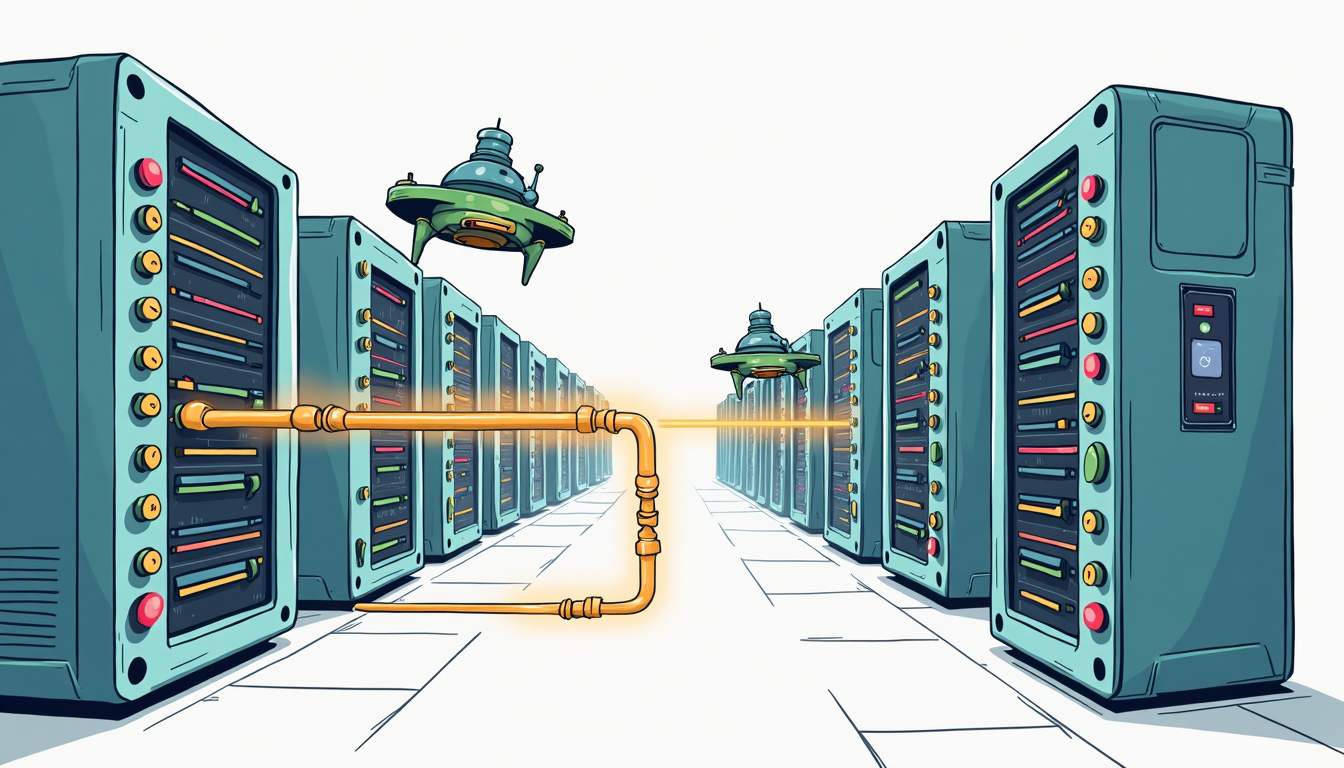Advanced n8n Error Handling and Recovery Strategies
n8n is increasingly adopted to automate complex workflows across CRM, e-commerce, finance, and IT operations. As these automations handle mission-critical tasks, robust error handling and recovery strategies become essential. This article explores pragmatic, advanced techniques for graceful failure management and for implementing automatic retry and rollback mechanisms in n8n, with concrete examples, patterns, and operational considerations that reduce downtime and data inconsistency.
Graceful Failure Management
Graceful failure management means designing workflows to fail in predictable, controlled ways that minimize impact on users and downstream systems. For automation platforms like n8n, graceful failures are about visibility, containment, and mitigating side effects. Visibility ensures teams can quickly detect and triage issues; containment ensures a single failing node or workflow does not corrupt data or flood external APIs; mitigation focuses on compensating actions to maintain system integrity.

Designing for predictable failures
Start by mapping failure modes for each external dependency: network timeouts, API rate limits, authentication expiry, malformed data, or schema drift. For example, a payment provider might return transient 5xx errors 0.5–2% of the time during peak hours, while malformed webhook payloads often result from client-side library upgrades. Capturing these probabilities is helpful: instrumenting workflows for a few weeks will reveal the most common error classes, allowing prioritization of defensive logic.
In practical terms, place validation and normalization nodes near the workflow entry point. Use JSON schema validation to reject or redirect malformed input before attempting external calls. This prevents resource waste and simplifies error semantics: validation errors can be classified as client problems and handled separately from transient server errors.
Failure isolation patterns
Isolation reduces blast radius. Break large monolithic workflows into smaller, single-purpose workflows linked by durable queues (for example, Redis, RabbitMQ, or a database table used as a work queue). When a downstream system is unreliable, retries and backoff can operate on the queue consumer without halting the producer. In n8n, this can be modeled by having a producer workflow push normalized tasks to a queue or a database, and worker workflows consume and process them, each with its own retry and alerting policies.
Another useful tactic is the circuit breaker pattern. When an external API starts failing beyond a threshold, temporarily pause calls to that API and redirect tasks to alternate flows (e.g., fallbacks or manual review queues). n8n can implement circuit breakers by storing state in an external key-value store and evaluating that state before calling fragile nodes. This avoids hammering a failing service and can prevent cascading failures across multiple workflows.
Observability and alerting for graceful degradation
Timely detection is fundamental. Enrich logs with structured context (workflow id, node id, input hash, timestamps), and export these to a centralized observability system. Integrate metrics such as error rate per workflow, median execution time, and retry counts with dashboards and alerts. Practical thresholds might be a 3x increase in error rate over baseline or a sustained 5% error rate for critical workflows. Such thresholds should be tuned to the operational context.
When failures occur, degrade gracefully: respond to API consumers with informative error responses and estimated remediation timelines instead of generic 500 errors. For asynchronous processes, provide status endpoints so clients can poll or subscribe to updates, reducing repeated retry attempts from clients that can worsen system load.
Complement observability with proactive testing: run synthetic transactions and chaos experiments against representative workflows to validate failure-handling paths and ensure retries, backoff, and circuit breakers behave as expected under load and partial outages. Automated smoke tests that exercise validation logic, queueing behavior, and fallback flows should be part of continuous deployment pipelines so regressions in error handling are caught early.
Finally, codify operational responses. Maintain runbooks and automated remediation playbooks for common failure classes (rate limit breaches, auth token refresh failures, schema drift). Post-incident reviews should feed back into workflow design—adjusting thresholds, adding compensating actions (idempotency keys, reverse transactions), or introducing canaries—so the system continuously improves its ability to fail gracefully without surprising users or operators.
Automatic Retry and Rollback Mechanisms
Automatic retries and rollbacks are complementary tools: retries aim to recover from transient errors, while rollbacks compensate for partial success that would otherwise leave systems in inconsistent states. Combining both with idempotency and strong transactional boundaries is the key to reliable automation.
Smart retry strategies
Retries should be structured with exponential backoff, jitter, and limited attempts. A typical strategy is to attempt 3–5 retries with exponentially increasing delays (for example, 1s, 2s, 5s, 13s) and random jitter of ±20% to avoid thundering herd problems. In n8n, implement retries using a looped workflow segment or by leveraging external orchestrators and message queues that handle backoff natively. Store retry metadata with each task so that the process is resilient to n8n restarts.
Classify errors to determine retryability. Network timeouts and 5xx server errors are often retryable, while 4xx client errors like 401 Unauthorized or 422 Unprocessable Entity require different handling (refresh tokens or data correction). A practical pattern is to map HTTP response codes to an action: retry, refresh credentials then retry, route to manual review, or fail fast and notify. Many APIs also return rate limit headers; react to these by delaying retries until the reset window.
Idempotency and safe retries
Retries are safe only when operations are idempotent or when idempotency keys can be used. For create operations, include an idempotency key derived from business identifiers (order id, user id, timestamp bucket) so that repeated attempts do not duplicate records. Many modern APIs support idempotency headers; if not available, coordinate idempotency at the application layer by checking for existing records before creating new ones.
In n8n, generate idempotency keys early and persist them with the task payload. Downstream nodes should use that key in API calls or database operations. If an external service lacks idempotency support, implement a local deduplication step: before performing the action, query the target system for a matching marker or write a local “in-progress” record that is checked atomically where possible.
Rollback and compensation workflows
When an operation partially succeeds—payment authorized but shipment not created; database updated but external inventory not decremented—implement compensation workflows rather than relying on brittle distributed transactions. Compensation reverses the side effects of completed steps. For instance, if a multi-step order workflow fails after payment, a compensation workflow could initiate a refund, return stock allocations, and notify the customer.
Design compensation actions as explicit, testable workflows. Store the list of completed steps and sufficient context to undo them (transaction ids, resource identifiers, timestamps). A practical pattern is to append a compensation record to each task as each step completes. If the workflow eventually fails, a dedicated rollback workflow reads those records and executes compensation actions in reverse order. This avoids assumptions about the state of external systems and enables partial reconciliation when some compensation steps themselves fail.
Transactional patterns and eventual consistency
Distributed transactions are rarely feasible across heterogeneous services. Accept eventual consistency and design with compensations, idempotency, and clear remediation paths. For critical financial workflows, consider two-phase commit alternatives such as using a single authoritative ledger service for balance changes and orchestrating other services via events that can be reconciled periodically.
Event sourcing can be helpful: store every intent as an immutable event and derive current state by folding events. In failure scenarios, replays and compensating events allow recovery without guessing intermediate states. n8n can be used to emit and consume these events—ensure event payloads are rich enough to support compensations and replays.
Operational considerations and testing
Automated recovery strategies require rigorous testing: unit tests for node-level logic, integration tests that simulate API failures, and chaos testing to validate resilience under real-world failure patterns. Inject faults like network latency, timeouts, and partial responses to ensure retries, circuit breakers, and compensations behave as expected. Schedule regular drills to exercise manual review paths and escalations.
Monitoring the health of recovery logic is equally important. Track metrics like retry success rate, average number of retries, time to recover, and compensation execution rate. When compensation frequency rises, it indicates systemic problems needing developer attention rather than more retries. Set alerts for compensation executions on critical workflows so operations teams can investigate root causes before customer impact grows.
Example patterns implemented in n8n
An order fulfillment use case illustrates these concepts. A producer workflow validates and normalizes an order, writes a task to a Redis queue with an idempotency key, and returns an acknowledgement. A worker workflow consumes the queue, reserves inventory in the internal database, then calls a carrier API to create a shipment and finally charges the customer. If the carrier API returns a 5xx, the worker retries with exponential backoff and jitter. If charging succeeds but shipment creation fails after max retries, a compensation workflow triggers a refund and restores inventory.
In another example, webhook-driven data ingestion must handle high-throughput bursts. Implementing an ingress buffer and circuit breaker prevents overwhelming downstream APIs. When rate limits are encountered, tasks are queued for delayed processing. For sensitive updates, the workflow writes an audit trail to a durable store before attempting external calls, allowing recovery workflows to reconcile mismatches later.
Putting it together, resilient n8n automation rests on several pillars: clearly classified error handling policies, idempotency by design, durable task handoffs, structured retries with backoff and jitter, compensating rollback workflows, and strong observability. These practices limit customer-visible failures and reduce manual intervention, while providing clear operational signals for when human attention is required.






